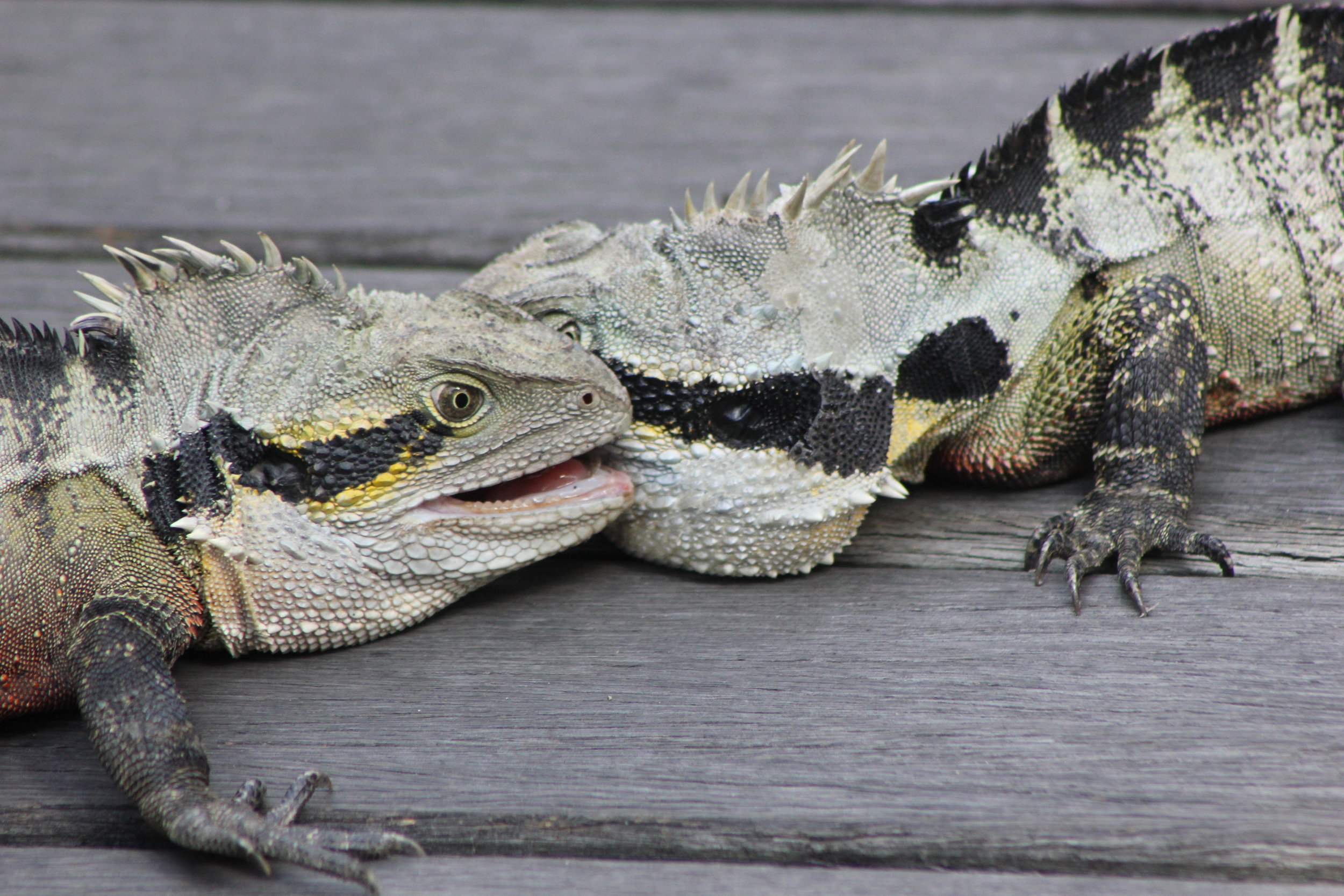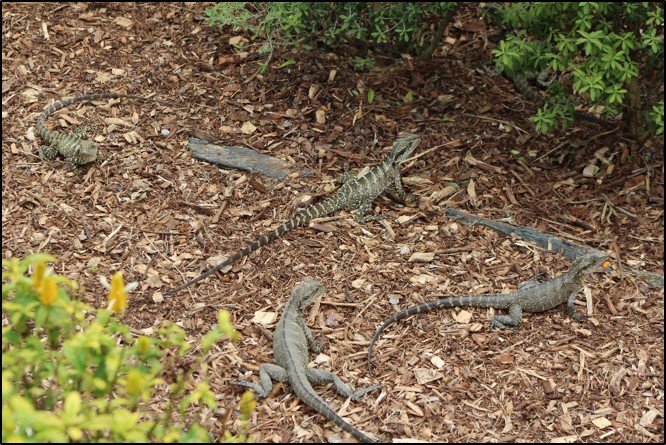The late Terry Pratchett once wrote that “noble dragons don't have friends". PhD student Kasha Strickland is putting that to the test.
Illustration by Leigh Douglas
Ethograms is a monthly column published in collaboration with the Australasian Society for the Study of Animal Behaviour (ASSAB), showcasing the work of early-career researchers. Dominique Potvin is a lecturer at the University of the Sunshine Coast, and an outreach officer for ASSAB.
In downtown Brisbane, the Roma Street parklands are bustling with urban wildlife. Brushtail possums scurry up and down the eucalypts, as dawn breaks and the songbird chorus begins: Magpies, wattlebirds and fairy-wrens all contribute to this most Australian of soundscapes.
As the sun rises higher and the day gets hotter, a different group of animals come to centre stage. The reptiles are now in their element. Pause for a moment and you begin to realise that eastern water dragons are everywhere: A claw becomes visible from a curbside drain, a tail flicks across the footpath, and a head bobs up and down from the grass. There’s no telling how many dragons are hiding in the shade or on the edge of a pond. The park itself is a metropolis; and, like in any city, social scenarios — from confrontations to congregations — abound.
In folklore and fiction, dragons are often depicted as solitary creatures, ferocious, greedy, cunning and reclusive. In fact, reptiles in general, both real and imaginary, have traditionally been considered asocial, an assumption that is very quickly proving false.
“The study of animal sociality has been dominated by studies of bird or mammal species,” explains Kasha Strickland, a PhD student at the University of the Sunshine Coast. “We need better phylogenetic representation in the study of social evolution to progress our understanding”.
The inclusion of reptiles and other animal groups in sociality research is shedding new light on the evolution of social behaviours. In particular, Strickland is using data from the Roma Street dragons to understand whether sociability — the tendency to interact positively with other individuals — is a personality trait. To be considered as such, sociability must be demonstrated repeatedly in the same individual in diverse scenarios.
PhD researcher Kasha Strickland is studying sociality in Brisbane's water dragons. © Kasha Strickland
When studying the evolution of traits, the role of the environment has always been considered important. However, only recently have researchers included social setting as an integral part of an individual's environment, and personality as a trait that might be shaped by these conditions. That the social behaviour of an individual, population or even species might evolve through living in communal groups is not a novel idea, but the ability to gather and analyse ample data to support the theory has only recently become possible.
The data for this project come in the form of dragon interactions. Over seven years of field seasons, researchers in Celine Frère’s lab at the University of the Sunshine Coast have been walking transects of Roma Street Parkland, recording the spatial position of every dragon they encounter. Photos are taken for individual identification back in the lab, and behaviours, such as head nods or arm waves, are recorded. There are an enormous number of data, and figuring out how to analyse them has been one of the biggest challenges.
Strickland uses methods borrowed from social network and quantitative genetic frameworks to analyse these massive datasets. “The long monotony of collecting and then photo IDing the quantity of data required to ask our questions has been a slog," she says. "It took the best part of three years — including my master’s year in the UK — to process and collect all the data which I am now using”.


So what are the findings that have made this all worth the effort? Strickland has pinpointed an individual’s sex as a factor in sociability: Male dragons show evidence of having a social personality — that is, they tend to have a repeatable, typical social behaviour profile — whereas females do not.
Strickland also found that, while most dragons adjust their social interactions depending on the number of other dragons around, the most social individuals tend to remain that way regardless. It is reminiscent of those humans among us who make friends easily — we all know the type — whether they are in a group of 3 or 300.
Lastly, Strickland found that certain dragons, after experiencing hostile encounters, avoid future conflicts by eschewing social interactions altogether. Here, it is again tempting to draw parallels to human personality types. Indeed, the idea that human personality traits can affect, or be affected by, sociality may be just as evolutionarily plausible.
Whether personality traits and sociality play a part in the evolutionary trajectories of each other is one of the big questions in social evolution. Strickland thinks that including more taxonomic diversity in such studies will help move the field forward, as will incorporating genetic information. In this way, we can ascertain whether sociality is heritable, and whether genetic relationships between individuals play a part in their social interactions in different scenarios.
In the meantime, it may be prudent to start thinking of dragons less as solitary hoarders, and more as a motley group of neighbours. Fantasy authors take note.
Edited by Andrew Katsis
































































